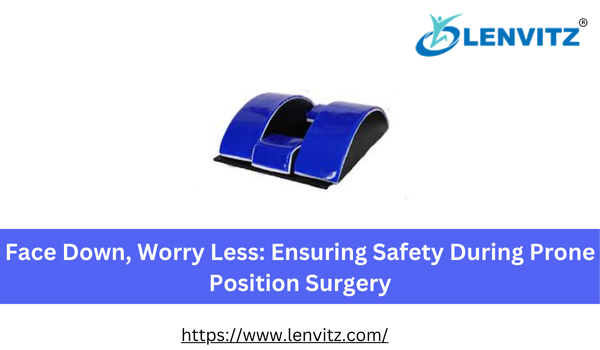The Art of Prone Position Safety: Essential Gear like Prone Position Gel Pads, Prone Head Rest, and OT Table Mat
When a surgical procedure requires a patient to lie face down—known as the prone position—a whole new set of safety challenges arises. Procedures like spinal or back surgery necessitate this position, but it carries a risk of nerve damage, pressure ulcers, and vision loss if the patient is not positioned with meticulous care. Modern surgical teams rely on specialized equipment to transform this risky stance into a safe and stable one. Understanding these tools—like the prone position gel pads and the prone head rest—is key to appreciating the depth of care in the operating room.
The Critical Challenges of the Prone Position
Lying face down for several hours puts immense pressure on certain parts of the body. The eyes, nose, cheeks, ears, chest, and knees become high-risk areas. If pressure is not managed correctly, it can compress nerves, restrict blood flow, and even compromise breathing. The goal of safe Prone Position setup is to suspend the body while protecting the head and limbs.
Building the Foundation: The OT Table Mat
- OT Table Mat: The first line of defense is the OT Table Mat (Operating Table Mat). This foundational layer covers the entire operating table and is typically made of a viscoelastic material that evenly distributes pressure across the patient’s back, torso, and legs. It serves as a continuous, cushioning buffer against the hard surface of the table, immediately reducing the risk of pressure injuries over large body areas before any specialized positioning occurs.
Targeted Protection for Head and Torso
Once the foundation is set, attention turns to the most vulnerable areas in the prone position: Safeguarding the Head and Face
- Prone Head Rest: The prone head rest is arguably the most critical component in this setup. It is a specialized, contoured support designed to cradle the forehead and sides of the face while leaving space for the eyes, nose, and mouth to breathe freely. This ensures that the patient’s airway remains open and, crucially, prevents direct, damaging pressure on the delicate eye area, thus guarding against potential vision loss or corneal abrasions. The gel material within the rest conforms gently, maintaining cervical spine alignment and patient comfort.
- Prone Position Gel Pads (Specific Use): While the prone position gel pads can refer to various supports, they are especially crucial when used under the chest and pelvic area. Often, two long, parallel pads are used to elevate the patient's chest and hips, creating a hollow space underneath the abdomen. This maneuver is vital because it prevents abdominal compression, which could otherwise restrict breathing and increase pressure on the major blood vessels, negatively impacting the patient's circulatory system and surgical field.
A Holistic Approach to Patient Safety
The use of an OT Table Mat, a specialized prone head rest, and various prone position gel pads demonstrates a commitment to comprehensive patient safety. These specialized tools work in concert to neutralize the inherent risks of the prone position, allowing the surgical team to perform complex procedures with confidence while ensuring the patient's recovery is not complicated by preventable positioning injuries. This meticulous attention to detail is the hallmark of modern, high-quality healthcare.

